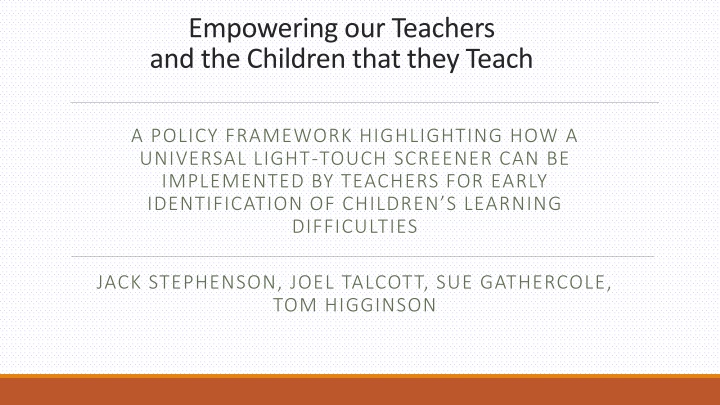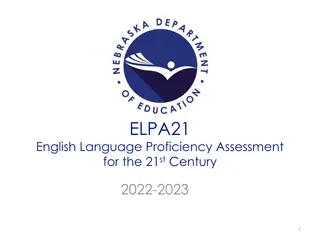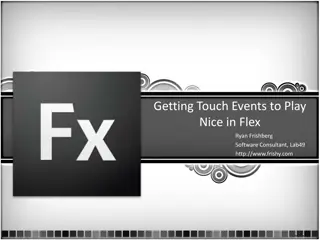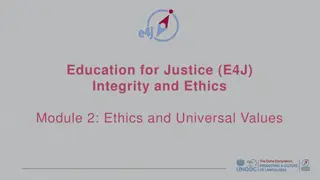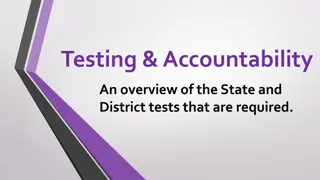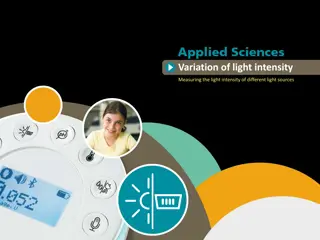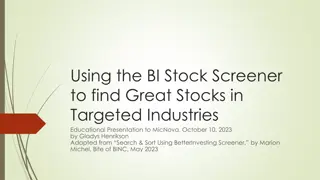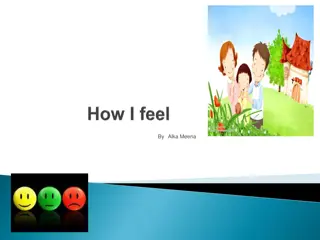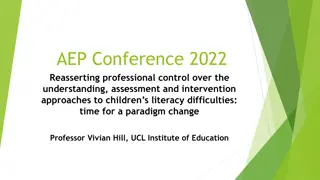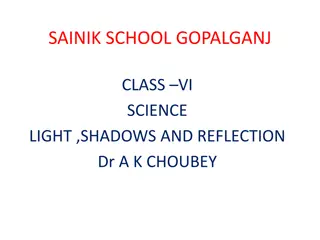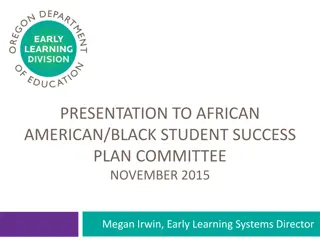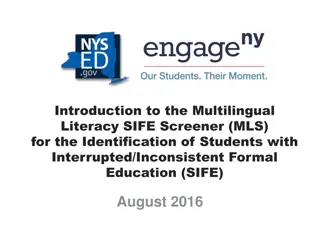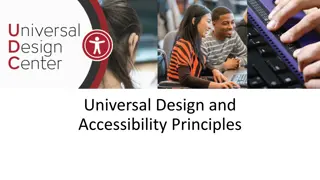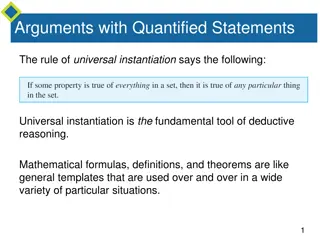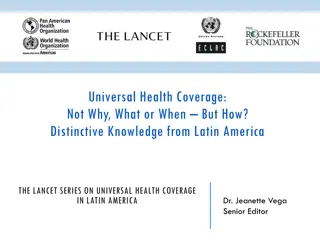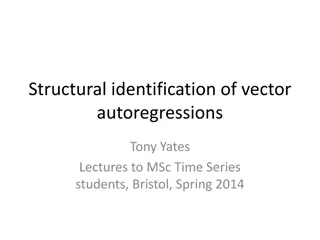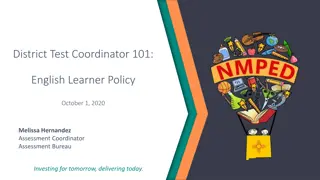Universal Light-Touch Screener for Early Identification of Children's Learning Difficulties
Proposal framework advocating for teacher-led implementation of a universal light-touch screener to identify children's learning difficulties early. Emphasis on timely intervention, equitable access to support, and improving outcomes for all children. Recommendations include broadening assessment criteria and enhancing resource provision. The policy framework promotes a holistic view of children's development, focusing on key cognitive domains and continuous assessment for targeted interventions.
Download Presentation

Please find below an Image/Link to download the presentation.
The content on the website is provided AS IS for your information and personal use only. It may not be sold, licensed, or shared on other websites without obtaining consent from the author.If you encounter any issues during the download, it is possible that the publisher has removed the file from their server.
You are allowed to download the files provided on this website for personal or commercial use, subject to the condition that they are used lawfully. All files are the property of their respective owners.
The content on the website is provided AS IS for your information and personal use only. It may not be sold, licensed, or shared on other websites without obtaining consent from the author.
E N D
Presentation Transcript
Empowering our Teachers and the Children that they Teach A POLICY FRAMEWORK HIGHLIGHTING HOW A UNIVERSAL LIGHT-TOUCH SCREENER CAN BE IMPLEMENTED BY TEACHERS FOR EARLY IDENTIFICATION OF CHILDREN S LEARNING DIFFICULTIES JACK STEPHENSON, JOEL TALCOTT, SUE GATHERCOLE, TOM HIGGINSON
Breakdown of session Introduction Context Overview and key points of the proposal framework The potential beneficiaries of the proposal Why now? Comments and Q&A
Opportunity for all Right support, right place, right time Emphasis: teacher-led and learning environment focused educational initiatives early and accurate identification of children s learning needs prompt access to targeted support for any child who needs it, regardless of diagnosis Remit: improving outcomes and mainstream provision for all children timely and equitable access to support including early identification and intervention of special needs Opportunity for all: strong schools with great teachers for your child. DfE Policy Paper, 2022 SEND review: right support, right place, right time. DfE & DHSC, 2022
SASC Recommendations KS1 Phonics Screening Check Key checkpoints built into the Years 1-6 curriculum extend to include other elements, to evaluate reading readiness. Frequent light-touch assessment adapt for use as an early indicator for children who require additional intervention Criteria for onward referral to more specialist services for children according to need Enhanced resource provision for developing children s oral vocabulary and communication skills Spend to save on SEND. SASC response to SEND green paper, July 22. https://www.sasc.org.uk/SASCDocuments/
The policy framework Teacher-led, light-touch screening for early indicators of difficulties in learning achievement Broadens current focus to 4 core cognitive domains which promote and constrain children s learning Phonics (to decoding)*, vocabulary, working memory, sustained attention Learning extending beyond literacy across the curriculum Continuous assessment of relative strengths and weaknesses Pipelines to specific interventions and more detailed assessment services Equity of provision: universal, classroom-based, holistic view of children s development
Key stakeholders Children and families Equity of provision for all children and opening the door to better attainment in educational contexts National Foundation for Educational Research reports, as reported last year, one of the key messages to emerge is that many schools believe that a phonics approach to teaching reading should be used alongside other methods . Teachers and schools Teacher Empowerment and increased classroom productivity Government & Society Increased participation and sustainability of education, increased economic productivity and a reduction of criminality and anti- social behaviour
What might the screener look like? Administered by teacher Short questionnaire relating to known classroom behaviour + simple direct assessments of the child including phonics (<30 mins) Bespoke assessment package combining key elements of established, reliable, evidence-based assessments in short forms Will require standardisation and validation on UK national sample at KS1
Elements of the screener Phonics/decoding (PA) Vocabulary (VO) Working memory (WM) Sustained attention (SA) Administered and interpreted by teachers Additional training and financial resourcing minimised Evidence-based links to environmental or cognitive interventions
Screening framework: key points The Universal screening proposed: can go a long way towards addressing inequalities of access to support. identifies strengths and weaknesses in key curriculum areas beyond literacy, including mathematics and science. is designed to provide value to teachers and augment empowerment to support their pupils is distinct in rationale from the case for specialist assessment and diagnosis for children with the most marked difficulties. can inform multiple levels of support, including regular classroom activities and referral for SEND assessment provides an illustrative case rather than a prescription of a screening protocol
Why now? The political landscape and mood Early Identification of any Special Educational Needs and Support is critical to improving the outcomes for children and young people with SEND Nick Gibb (Minister of State for Schools) Early Identification is Key Claire Coutinho (Parliamentary Under Secretary of State at the Department for Education) It is so very important that at the heart of the SEND review is early identification and early support Will Quince (former Parliamentary Under- Secretary of State for Education) We need to prioritise earlier intervention and quicker support Matthew Western (Shadow Minister for Higher Education) These contributions are amongst many others made by other members from across the House
